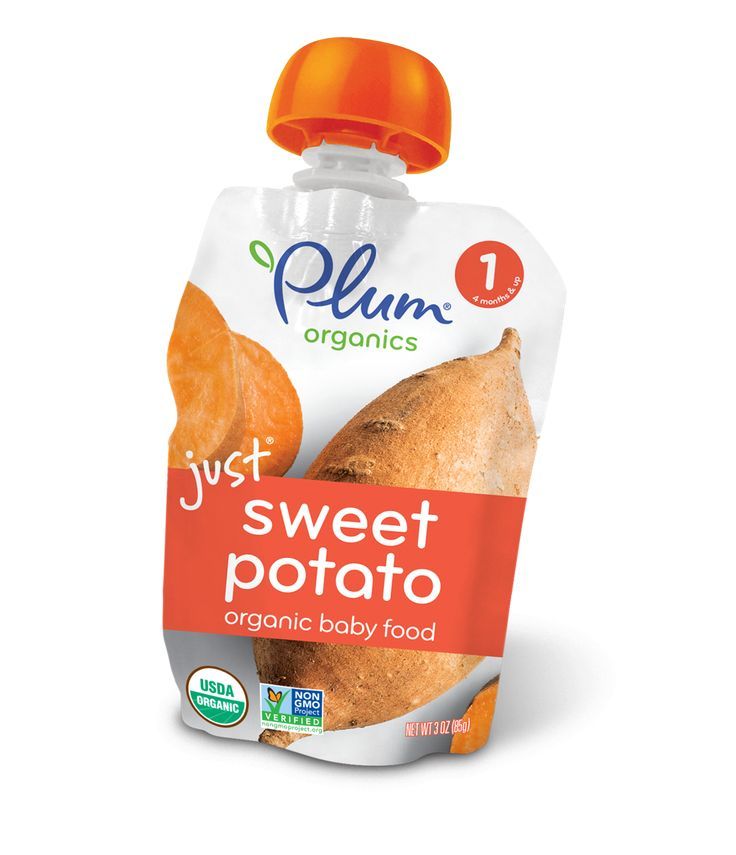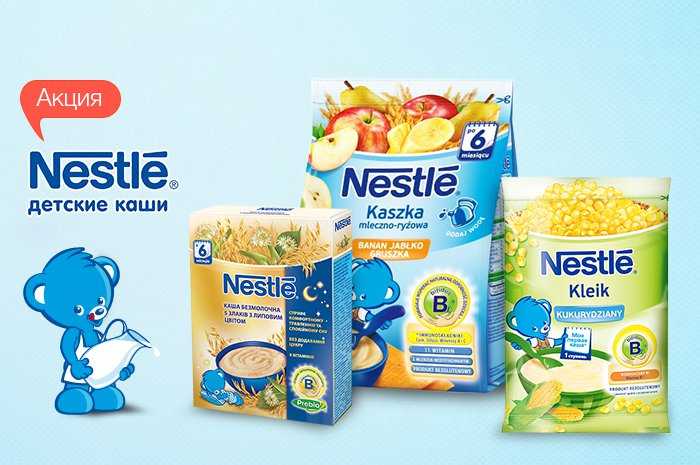List of allergenic foods for babies
Common food allergens and kids
Share:
Sharing new foods with your baby is an exciting milestone. Unfortunately, amongst the fun of watching your child experience new tastes remain questions and fears about food allergies. Recommendations of when to introduce certain foods seem to change often, and for many parents, it can be confusing to know what is best for your child at each age.
April Clark, registered dietitian with the Food Allergy Center at Children’s Health℠, offers tips on when and how to introduce the top allergenic foods.
How to decrease the chance of food allergies in kids
The eight most common food allergens include: cow’s milk, eggs, peanuts, soy, tree nuts, finned fish, shellfish and wheat (gluten). According to the FDA, they account for approximately 90% of all food allergies in the United States.
Previously, the American Academy of Pediatrics (AAP) recommended that the introduction of certain highly allergenic foods be delayed in high-risk children. However, the AAP now recognizes that early introduction of peanuts decreases the chance of developing peanut allergies. Clark recommends following new guidelines to slowly introduce allergenic foods after the addition of solid foods, which often occurs during a baby’s first 4 to 6 months.
Tips on introducing new foods
Clark recommends that any of the foods noted below should be introduced one at a time, and parents should carefully observe their child’s reactions. Foods should first be given as single ingredients – not as part of a recipe like eggs in a baked good. They can also be given with complementary fruits and vegetables that have already been proven safe.
If there isn’t an allergic reaction once a food is introduced, continue including it at least three times a week in your child’s meals to ensure the best results. There isn’t a firm deadline to stop serving the foods. Instead, Clark notes that a healthy, well-balanced diet should normally contain variations of these common foods.
- Cow’s milk (dairy) may be one of the first allergies to be noticed, as many formulas are made with milk. Unlike the other foods listed, experts recommend waiting until after age 1 to introduce cow’s (whole) milk into a child’s diet. Instead, Clark notes babies eating solid foods should try yogurt or cheeses.
- Eggs are an excellent source of protein for growing children. Clark recommends either scrambled eggs or pieces of hard-boiled eggs. Depending on the child, they may enjoy the squishy texture and prefer to feed themselves.
- Peanuts or peanut butter are another reliable source of protein. Do not give whole or even peanut pieces, as they can be a choking hazard; instead, peanut butter is a safer alternative, but the thick consistency can be difficult for most children to swallow. Clark recommends melting down the peanut butter with warm water or adding it to a fruit or veggie puree. If a child has severe eczema, and/or already has been diagnosed with egg allergy, they should be evaluated prior to peanut introduction.

- Soy is another allergy that is noticed early due to formulas with a soy base. Protein-packed tofu and edamame (soy beans) can be introduced when your child is ready. They are great options for self-feeding. Like cow’s milk, Clark says parents should not offer soy milk until after age 1.
- Finned fish and shellfish (shrimp, crab, clams, etc.) can be introduced as a puree around the 4 to 6-month mark, or in bite-size pieces once your child is ready. In addition to possible allergies, the AAP warns parents not to serve raw or undercooked items due to possible bacteria or viruses that can make your child seriously ill. Also, the AAP notes children shouldn’t eat more than 12 ounces of fish a week due to concerns about traces of mercury in fish or shellfish.
- Tree nuts (almonds, cashews or walnuts) follow the same guidelines as peanut and peanut butter above.
- Wheat (gluten) can be introduced as finger foods in teething biscuits, puffs and crackers that contain wheat.

Signs of a food allergy
Clark notes children with a first-degree relative (parent or sibling) with allergies are more likely to also have food allergies. Children (and their parents) who have a history of severe or recurring eczema and/or asthma are also at a higher risk to develop food allergies. If your child has any of these factors, you many want to consult your pediatrician for guidance on the best way to proceed.
Allergy symptoms and reactions can vary between children and may appear differently, depending on the age. Reactions can develop minutes after the food is ingested, or there may be a delayed reaction a few hours later. Clark cautions anyone can have a severe reaction at any time, and recommends following guidelines developed by Food Allergy Research & Education (FARE) to identify an allergic reaction. See FARE's list of symptoms here.
What to do if an allergic reaction occurs
Contact your pediatrician if your child has a mild allergic reaction and it is not an emergency.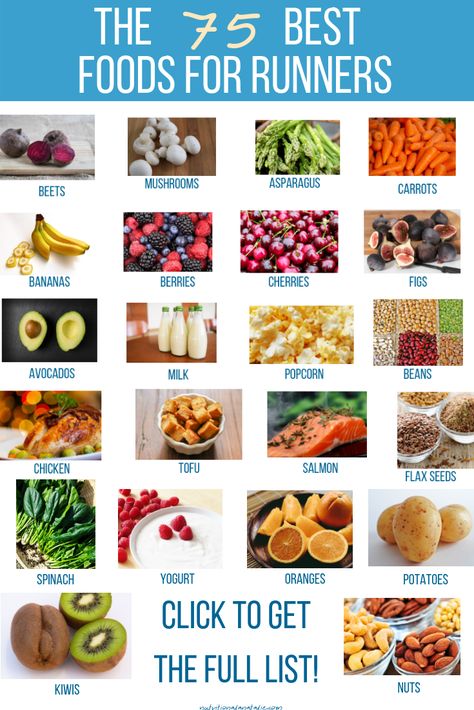 Call 911 immediately for severe and life-threatening reactions.
Call 911 immediately for severe and life-threatening reactions.
If you suspect your child has a food allergy, Clark recommends seeing a board-certified allergist to discuss your concerns. Bring any information about the food, the reaction and your family history to the appointment. The physician will likely take a detailed medical and diet history, and recommend appropriate testing that’s specific to your child’s symptoms and suspected food allergens. Your allergist will be able to manage the diagnosis and answer any questions. Specialists can also provide useful information like recipes and food allergy guidelines.
Download your guide to allergen-free lunches
Looking for tips to pack allergy-friendly school lunches? Download the Parents' Guide to Allergen-Free Lunches for kid-friendly recipes that are free of the top eight food allergens. Download now.
Learn more
Food allergy experts at Children’s Health can help with testing, questions and offer patient resources. Learn more about our program and services.
Learn more about our program and services.
For more information, please see the following additional references:
- Food Allergy Research & Education (FARE)
- Instructions for feeding peanut butter and recipes
- Additional information about introducing peanut butter
- LEAP study in the U.K. (Learning Early About Peanuts)
- Recommendations from the AAP for introducing food
Children’s Health Family Newsletter
Get health tips and parenting advice from Children’s Health experts sent straight to your inbox twice a month. Sign up now.
Most & Least Allergenic Foods For Babies With Allergies
Food allergies in babies are something that many parents worry about. Not only are they scary, but they can make introducing solids challenging. Food allergies in babies can also go undiagnosed for quite some time, leaving you confused about what may be leading to the symptoms your baby is experiencing.
While some babies may be at a higher risk of developing food allergies due to family history, some babies may have no greater risk at all and still experience an allergic reaction to certain foods.
In this article, we will explore how to know if your baby is allergic to certain foods and some of the most allergenic and the least allergenic foods for babies. We will also talk about food allergy testing and some steps you can take if your baby suffers from food allergies.
Is My Baby Allergic to Certain Foods?
So, maybe you have been suspecting a food allergy due to certain symptoms your little one is experiencing. Many mommas just have a gut feeling when something isn’t settling well with their child. For some moms, the first indication of a food allergy starts in infancy. If your baby is breastfed and experiences reflux, eczema, blood in their stools, or fussy behavior, there’s the potential for an underlying cow’s milk allergy if dairy is part of the mom’s diet. The dairy can pass through breastmilk and cause allergic symptoms in a baby with a cow’s milk allergy.
The dairy can pass through breastmilk and cause allergic symptoms in a baby with a cow’s milk allergy.
Other babies don’t develop symptoms until moms start introducing solid foods. Again, gastrointestinal symptoms can arise, as can fussiness and irritability, eczema, and even some life-threatening reactions like anaphylaxis shock. There’s also a condition called FPIES which stands for Food protein-induced enterocolitis syndrome, which is a rare but severe food allergy that affects the gastrointestinal system. An FPIES reaction can cause intense vomiting, diarrhea, and even shock.
If your baby is experiencing any of these serious and potentially life-threatening allergic symptoms, it is crucial to get immediate medical attention and then follow up with a pediatric allergist to help identify the exact food or foods causing these symptoms.
Some other commonly seen symptoms of food allergies in babies include:
- Coughing
- Wheezing
- Difficulty breathing
- Facial, tongue, or lip swelling
- Rash
- Hives
Introducing Solid Foods to Babies with Food Allergies
If you suspect your baby suffers from food allergies or your baby has already been diagnosed, introducing foods can be challenging. However, working with a pediatric allergist can help you develop a safe plan for solid food introduction. It may also help to know the least allergenic foods for babies as these foods are less likely to trigger an allergic reaction. However, keep in mind that every baby is different, and a baby can be allergic to any food, whether it’s on this list or not! This is especially true for babies suffering from FPIES, so always speak with your doctor first.
However, working with a pediatric allergist can help you develop a safe plan for solid food introduction. It may also help to know the least allergenic foods for babies as these foods are less likely to trigger an allergic reaction. However, keep in mind that every baby is different, and a baby can be allergic to any food, whether it’s on this list or not! This is especially true for babies suffering from FPIES, so always speak with your doctor first.
Keep reading because we will take a look at some of the least allergenic foods and the most allergenic foods in babies.
Understanding Allergies in Babies
Before we jump into the foods you will want to watch out for, there are some surprising statistics about infant food allergies that are important for every parent to know about. According to the Food Allergy Research and Education organization, 1 in 13 children have food allergies, and 30% of them are allergic to more than one food.
Food allergies in children are also skyrocketing. The CDC has estimated that food allergies in children have jumped up by 50% from the years 1997-2011. That’s a massive jump and something we need to be paying more attention to.
The CDC has estimated that food allergies in children have jumped up by 50% from the years 1997-2011. That’s a massive jump and something we need to be paying more attention to.
Many parents also wonder if their babies will outgrow their allergies. While many pediatricians tell parents that babies generally outgrow allergies to milk, the FARE (Food Allergy Research & Education) states that allergies to milk, eggs, wheat, and soy are generally resolved in childhood. Still, children are starting to outgrow these allergies at a much slower rate than what had previously been documented. This means that many children over the age of five have still not outgrown these allergies. Allergies to foods like peanuts, tree nuts, fish, and shellfish are generally not outgrown, and the child will likely have an allergy to these foods lifelong.
Another interesting area of research has shown that the season your baby is born may also play a role in their risk of developing a food allergy. Interestingly enough, a study found that babies born in Boston in the fall or the winter were more likely to have food allergies. So, what does this have to do with? It was hypothesized that this likely had to do with low UVB exposure and not enough vitamin D. This one study concluded that changes in exposure to sunlight and vitamin D might play a role in the development of childhood food allergies. Interesting, right?
Interestingly enough, a study found that babies born in Boston in the fall or the winter were more likely to have food allergies. So, what does this have to do with? It was hypothesized that this likely had to do with low UVB exposure and not enough vitamin D. This one study concluded that changes in exposure to sunlight and vitamin D might play a role in the development of childhood food allergies. Interesting, right?
Least Allergenic Foods for Babies
Now that we know a little more about food allergies in babies, let’s take a look at some of the least allergenic foods for babies. According to Dr. Sears, some of these foods include apples, avocados, broccoli, peaches, carrots, asparagus squash, sweet potatoes, rice, oats, chicken, turkey, lamb.
ApplesHomemade applesauce is often the very first food for babies. It is full of vitamin C and naturally sweet, so babies tend to love it! You can try using different varieties of apples to introduce new flavors. Homemade applesauce is also great for mixing with other fruits as well such as mangos and peaches.
Homemade applesauce is also great for mixing with other fruits as well such as mangos and peaches.
Another great fruit to start with are peaches. They are very sweet and can easily be made into a puree. They are also high in vitamin E, K, folate, and potassium.
AvocadosAvocados are another great first food. They are very high in monounsaturated healthy fats, rich in magnesium and fiber, and can be mashed for babies. Babies generally enjoy the mild flavor.
BroccoliBroccoli makes for a great first veggie. You can puree broccoli with some chicken broth for added flavor to provide your little one with fiber, folic acid, vitamin K, and C.
CarrotsCarrots are often a go-to veggie for parents. They have a mild but sweet flavor that most babies enjoy. Carrots can be puréed for little babies and then steamed and served with chicken or turkey for older babies ready for finger foods. They are rich in beta-carotene, fiber, vitamin K, and potassium.
They are rich in beta-carotene, fiber, vitamin K, and potassium.
Butternut squash is a delicious vegetable to introduce your baby to. It makes a yummy puree and is packed full of fiber and vitamin B6.
Sweet PotatoesIf your baby likes butternut squash, they will likely enjoy sweet potato too. Sweet potatoes are rich in calcium, selenium, and B-vitamins making them an excellent addition to your little one’s diet.
Rice & OatsMany parents start with rice or baby oat cereal when starting solids. They are often fortified with iron and folic acid, but rice and oats are great additions in their whole and natural state when baby is older. Rolled oats mixed with banana and molasses is a great breakfast option for an added fiber and iron boost, and rice served with a protein like chicken or turkey also makes for a well-balanced meal for older babies who are ready for more solid foods.
ProteinsChicken, turkey, and lamb are generally considered to be low allergenic foods for babies.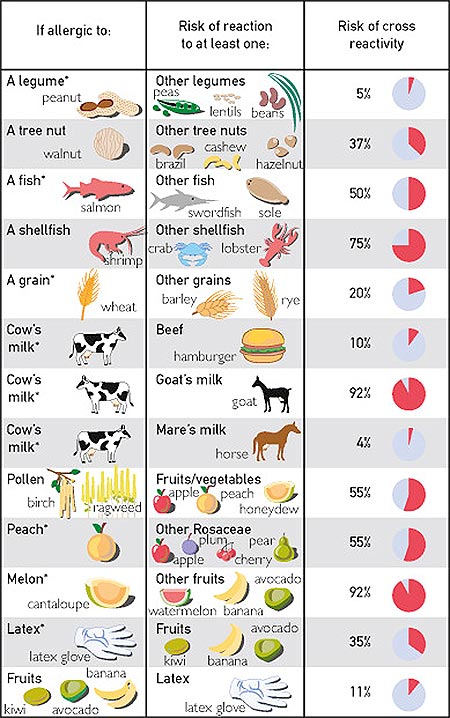 If tolerated, these proteins can be alternated in your baby’s diet and served with a veggie and carbohydrate for a balanced meal.
If tolerated, these proteins can be alternated in your baby’s diet and served with a veggie and carbohydrate for a balanced meal.
Most Allergenic Foods for Babies
While some foods are generally well-tolerated, a handful of foods are commonly known to trigger allergic reactions. According to Dr. Sears, some of the most allergenic foods for babies include:
- Peanuts
- Nuts
- Coconut
- Eggs & egg whites
- Dairy
- Soy
- Wheat
- Shellfish
- Yeast
- Citrus fruits
- Corn
- Peas
- Tomatoes
- Pork
- Mustard
- Cinnamon
- Chocolate
- Berries
- Buckwheat
If your child suffers from food allergies, it may be best to avoid these foods until you work with an allergist to determine a plan to avoid introducing foods your child may react to.
What to Do If You Suspect a Food Allergy
So, what do you do if you suspect your baby has a food allergy? First, you will want to avoid that food.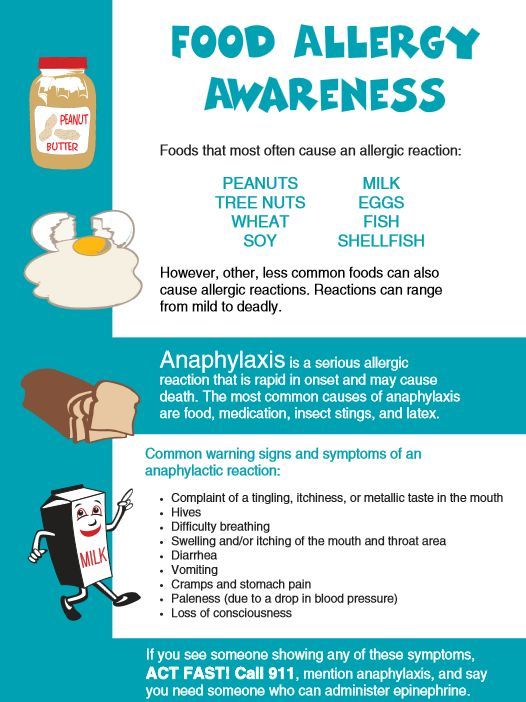 Do not introduce the suspicious food or any other highly allergenic foods to your baby’s diet until you speak with your pediatrician.
Do not introduce the suspicious food or any other highly allergenic foods to your baby’s diet until you speak with your pediatrician.
There are also specific food allergy tests a pediatric allergist can perform to really pinpoint what foods are causing issues. These tests include a skin prick test which is often combined with blood work.
While baby food allergies are very scary, working with the right medical team and knowing exactly what foods to avoid can help make the transition to introducing solid foods a little less stressful.
Major food allergens | Nestlé Baby&Me
0-6 months
Article
3.4/5 242 reviews
An allergic reaction in a child, just like in an adult, occurs when the body mistakenly perceives a substance as harmful, in other words, it is a defensive reaction to an invasion that actually did not occur.
8 min. for reading Feb. 17, 2022
Childhood allergies have many distinctive symptoms, the most common of which are eczema, rashes (scaly patches that are wet or dry, and seborrheic crusts on the baby's head), digestive problems (flatulence, colic, loose stools or constipation), and difficulty with breathing (asthmatic bronchitis, bronchial asthma). The risk group for developing allergies includes infants whose parents or siblings suffer from an allergic reaction to any product. If food allergy was observed in one of the parents, then the risk of its development in the child reaches 20-40%, if both, then the probability of the child increases to 60-80%, and not this or that disease is inherited, but the very predisposition to it. nine0003
The immune system of baby begins to form in the womb and then, during the first year of life, "ripens", encountering various foreign environmental factors, learning to recognize them and defend itself. During 15-16 years there are constant changes that can be considered as the development and formation of "adult" immunity. But the first year of life is the most difficult and responsible.
During 15-16 years there are constant changes that can be considered as the development and formation of "adult" immunity. But the first year of life is the most difficult and responsible.
For a baby, food is the main and main source of foreign proteins, potential allergens. Especially dangerous for an infant is the early introduction of ordinary children's dairy products with whole cow's milk protein, and even more so whole milk, into the diet, since a child's allergy in a newborn to cow's milk protein, developing very quickly, can cause acute and even life-threatening reactions in the child. nine0003
The timely appearance of certain beneficial bacteria in the intestines is also very important for the formation of the child's immunity. These are primarily bifidobacteria and a little later lactobacilli. The establishment of a normal microflora helps the cells of the intestinal mucosa to properly process and assimilate food, as well as more effectively prevent the development of an allergic reaction to foreign proteins.
With mother's milk, the child "passively" receives immunoglobulins and other protective factors to avoid infection and the early development of food allergies in the newborn infant, even if there is a family predisposition. Breast milk contains a small amount of proteins from the food eaten by the mother, which prepares the baby for a painless encounter with these foods in the future. nine0003
Prevention of food allergies
As you know, it is better to prevent a disease than to treat it later. Mistakes in the diet of babies predisposed to allergies often begin immediately after the birth of a child. Usually, after giving birth, the mother has very little milk, but it has a special composition, “invented” by nature for feeding a newly born little man. This "starter", highly nutritious milk is called colostrum and is gradually replaced by breast milk. The apparent "lack" of colostrum milk in the first 3-4 days of a child's life is normal; it is not necessary to supplement the baby with any special children's dairy products.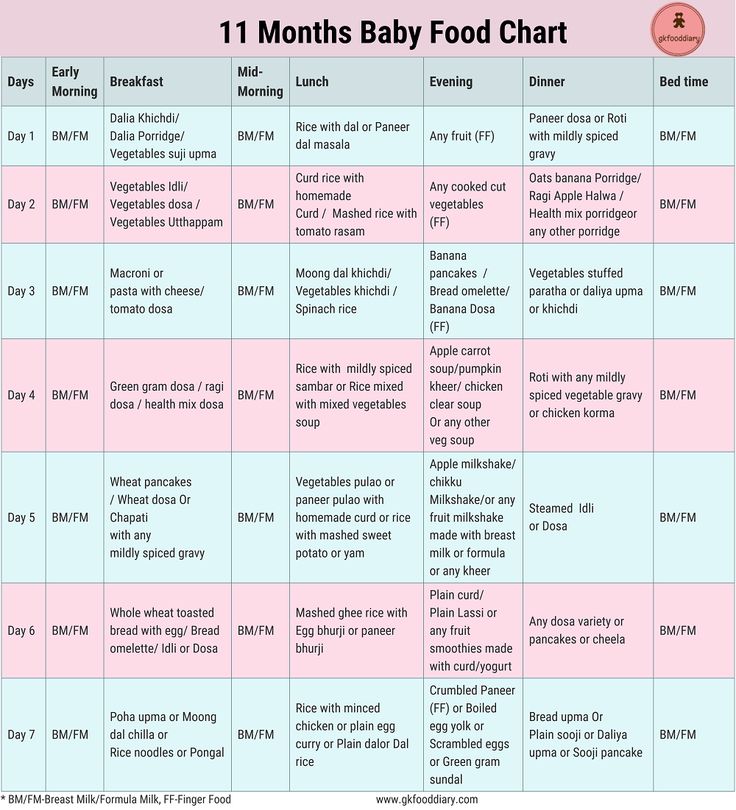 Immediately after birth, children are often restless and additional artificial nutrition calms them, creating a false effect of well-being. Such a desire to "feed and soothe" the child is contrary to the laws of nature and can be a disservice if the baby has a predisposition to allergies. Feeding such babies with cow's milk protein-based infant formula immediately after birth means several times the risk of developing food allergies. nine0003
Immediately after birth, children are often restless and additional artificial nutrition calms them, creating a false effect of well-being. Such a desire to "feed and soothe" the child is contrary to the laws of nature and can be a disservice if the baby has a predisposition to allergies. Feeding such babies with cow's milk protein-based infant formula immediately after birth means several times the risk of developing food allergies. nine0003
Therefore, the first rule: do not supplement a child with a predisposition to allergies with regular infant milk products, and if necessary, use only special hypoallergenic infant dairy products with a proven preventive effect.
The term "hypoallergenic" means that infant formula helps prevent food allergies in the baby. When creating such children's dairy products, manufacturers of baby food using a special treatment (hydrolysis) break down the protein found in the infant formula. All hypoallergenic baby dairy products are divided into moderately hydrolyzed and highly hydrolyzed, depending on how much protein is broken down in them. Highly hydrolyzed infant formula can be conditionally called non-allergenic, since it does not contain or almost does not contain proteins that can cause or maintain children's allergies, and is used mainly to treat an already developed allergic reaction. Such children's dairy products should not be used alone, without medical supervision. If a food allergy has already developed, then first of all it is necessary to consult a doctor who will select the treatment and help determine the diet. nine0003
Highly hydrolyzed infant formula can be conditionally called non-allergenic, since it does not contain or almost does not contain proteins that can cause or maintain children's allergies, and is used mainly to treat an already developed allergic reaction. Such children's dairy products should not be used alone, without medical supervision. If a food allergy has already developed, then first of all it is necessary to consult a doctor who will select the treatment and help determine the diet. nine0003
Moderately hydrolyzed baby milk products break down cow's milk protein into "medium" sized pieces that are less likely to cause an allergic reaction than whole milk protein. In addition, it is the partially cleaved protein that affects the immune cells of the child's intestines, causing the production of immunity and suppressing allergic reactions. This process is called the formation of tolerance (tolerance) to cow's milk protein, i.e. normal tolerance without the development of allergies.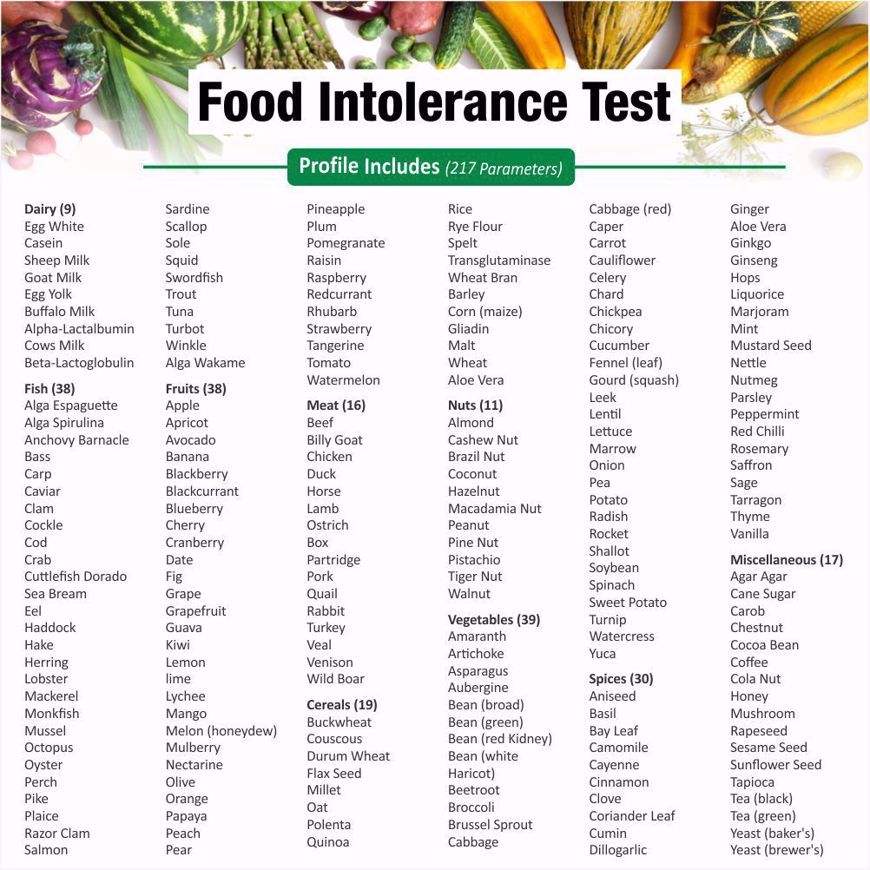 Partially digested protein infant formula is designated H. A. (H. A. stands for HypoAllergenic, that is, hypoallergenic). Thus, hypoallergenic infant milk products have a dual effect on the immune system: they prevent the development of infant allergy to infant formula and promote gradual addiction to milk protein. nine0003
Partially digested protein infant formula is designated H. A. (H. A. stands for HypoAllergenic, that is, hypoallergenic). Thus, hypoallergenic infant milk products have a dual effect on the immune system: they prevent the development of infant allergy to infant formula and promote gradual addiction to milk protein. nine0003
Second rule: Breastfeed your baby for as long as possible, at least until six months of age . It will be better if a nursing mother limits the consumption of chicken eggs, milk and dairy products, fish and seafood, chicken meat, peas, beans, beans, and millet. These foods should not be completely excluded, but it is better to eat them not every day and in moderation. You should also limit the use of long-term storage products containing dyes, spices, preservatives, stabilizers and food additives. nine0003
The most important condition for the prevention of allergies, which, unfortunately, is often violated, is not to introduce complementary foods - cereals, vegetable puree, cottage cheese - for up to four months. In the first six months, feed the baby only with breast milk, and in case of its deficiency, if the child is predisposed to allergies, with a special hypoallergenic infant formula. After the sixth month, the baby's diet gradually expands, however, up to a year, children with a predisposition to allergies should not be given whole milk (both cow's and goat's), kefir and other dairy products; up to one and a half and even up to two years, it is better to exclude eggs, fish, seafood; up to three years - nuts, peanuts, honey. This “delayed” introduction of foods that are more likely to be food allergens helps to reduce the likelihood of childhood allergies. nine0003
In the first six months, feed the baby only with breast milk, and in case of its deficiency, if the child is predisposed to allergies, with a special hypoallergenic infant formula. After the sixth month, the baby's diet gradually expands, however, up to a year, children with a predisposition to allergies should not be given whole milk (both cow's and goat's), kefir and other dairy products; up to one and a half and even up to two years, it is better to exclude eggs, fish, seafood; up to three years - nuts, peanuts, honey. This “delayed” introduction of foods that are more likely to be food allergens helps to reduce the likelihood of childhood allergies. nine0003
Introduction of complementary foods to children with food allergies
Complementary foods are introduced to infants at risk later than their healthy peers - from 5-6 months of age.
When feeding a child up to a year old, pediatricians recommend starting complementary foods with one-component purees or cereals in order to be able to track the reaction of the baby's body.
If the child often has loose or unstable stools and is not gaining weight well, give him porridge as the first food. Children with overweight and constipation are given vegetable puree first. nine0003
For children with food allergies in the first year, 1 type of cereal, 1 type of meat, 1-2 types of vegetables and fruits is enough. Beef has an antigenic affinity for cow's milk proteins and can also cause allergies. It is better to give piglet or turkey meat. Among meat purees, choose those that do not contain broth, spices, salt.
Introduce whole cow's milk after 1 year of age, whole eggs after 2 years, fish and nuts after 3 years.
Introduce a new product only when the baby is healthy, starting with ½ tsp. and gradually increasing its volume. In case of poor tolerance, temporarily exclude the product and try to give it again after a few days. nine0003
Give each new product 5-7 days in a row before introducing another to monitor the reaction of the baby's body.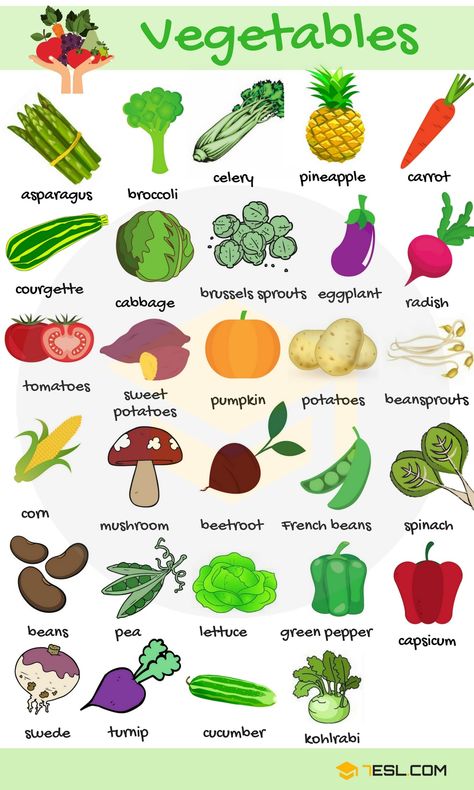
Supplement your child's diet with only single-ingredient foods - reactions to one or another ingredient are difficult to track when using multi-ingredient products.
Give complementary foods from a spoon in the morning and afternoon to track the reaction to the product during the day.
Low allergenic foods: cauliflower, green apple, plum, pear, rice porridge, rabbit, turkey. nine0003
The most common food allergens are: cow's milk, eggs, fish, nuts, soy, wheat, citrus fruits, honey, chocolate, strawberries, tomatoes.
If your child is allergic to cow's milk, avoid milk and dairy products (yogurt, cream, etc.) from the diet. The doctor will recommend how you can replace them. To avoid nutritional deficiencies, your doctor will advise you to drink calcium-fortified water or increase your daily intake of fruits and vegetables, and recommend hypoallergenic infant formula. As a rule, over time, children's allergies of this type disappear. nine0003
nine0003
Gluten
Gluten is a vegetable protein found in certain grains (rye, wheat, barley, oats) and products made from them (pasta, biscuits, bread). Gluten allergy occurs in about one in 2,000 children. Among her symptoms is diarrhea, accompanied by a small increase in weight and bloating. If you notice these symptoms, see your doctor. If the baby is allergic to gluten, exclude foods containing it from the diet and feed the baby gluten-free cereals: buckwheat, rice, corn. nine0003
Chicken eggs
In eggs, allergens are mainly contained in the protein, but not only. Doctors recommend not to give the child egg whites in the first year of life. It is necessary to be attentive to the composition of products: eggs, like cow's milk and peanuts, are used in the preparation of a wide variety of foods, as well as individual vaccines (for mumps, flu, etc.). Symptoms of an egg allergy can be respiratory (asthma) or skin (eczema or rash) in nature. In order not to leave the child without animal proteins, replace eggs with meat, oily fish or cereals. nine0003
nine0003
Will a child outgrow a food allergy?
Children's food allergies are most common in children under 2 years of age. In most of them, adverse reactions to food allergens decrease as immunity is strengthened and treatment is carried out. However, an allergic reaction to nuts, fish, and seafood can last a lifetime. Give the child this food not earlier than the above terms.
The GERBER ® baby food assortment includes a large number of one-component fruit, vegetable and meat purees, juices and cereals, on the basis of which you can create an individual hypoallergenic diet for your baby. nine0003
Doctor of Medical Sciences, Head of the Department of Nutrition for Children and Adolescents at the Morozov Children's City Clinical Hospital Tatyana Nikolaevna Sorvacheva: "The growth of atopic diseases throughout the world in recent years indicates the need to develop effective preventive measures, starting from the earliest age of the child. As the main
- long-term breastfeeding (at least 6 months) provided that the mother follows a hypoallergenic diet or, if necessary, the use of hypoallergenic infant milk products;
- adequate dates for the appointment of complementary foods, in particular, somewhat later than for healthy children;
- the use of specialized hypoallergenic complementary foods, in particular monocomponent gluten-free and dairy-free cereals, monocomponent meat, vegetable and fruit purees.

On the pages of our site you will also learn how to treat a runny nose in a child and other useful information about the health and nutrition of your baby.
Last reviews
Average customer rating
242 customer ratings
Snapshot of community ratings
- five 85
- 4 37
- 3 49
- 2 36
- one 35
The most allergenic foods for a child: what parents need to know - Parents.ru
Health
- Photo
- Imgorthand/Getty Images/E+
You can find out which foods are the most allergenic from a special table on which pediatrician recommendations are based on the sequence of introduction of complementary foods. So, allergenic foods, the list of which is given in this table: cow's milk, fish, chicken, red fruits and berries, sweets.
So, allergenic foods, the list of which is given in this table: cow's milk, fish, chicken, red fruits and berries, sweets.
Important details
-
Cow's milk, or rather, cow's milk protein is not tolerated by about 80% of children under 2 years of age. The reason is the lack of enzymes necessary for its processing. When they form and begin to be produced, and this happens after 2 years, the problem will disappear by itself. nine0003
-
Fish is also one of the most dangerous allergens. And for some people, the smell of fish alone can cause an attack of suffocation. It is for this reason that it is introduced into complementary foods very carefully, after 8 months in microscopic doses, and the reaction of the baby is carefully monitored.
-
Eggs, to be exact, egg white. The common belief that quail eggs are not as allergic as chicken eggs is just an opinion. In fact, the reaction to them occurs at about the same frequency as to chicken protein.
 Conclusion: acquaintance with eggs begins with the yolk. Protein in the diet of a child appears only after the baby is 1 year old. nine0003
Conclusion: acquaintance with eggs begins with the yolk. Protein in the diet of a child appears only after the baby is 1 year old. nine0003 -
Meat. The risk of allergies is great if the baby tries the chicken. Therefore, complementary foods begin with rabbit meat, turkey and even horse meat. In any case, it is not recommended to give fatty meats and poultry. Meat broths are given to a child only after 1-1.5 years. In this case, the first broth always merges. The bird must be skinned and subcutaneous fat removed.
The first step for parents of an allergic child is to start a food diary. This is a tool that will help control the nutrition of the baby, you can show it to a specialist for whom the collected data will be a good reason for prescribing treatment or therapy. Keeping a regular and accurate diary allows you to identify potential allergens and make a list of foods for which the child has a clear intolerance. nine0003
Red fruits and berries
Very young children are best given green vegetables and fruits. So, for example, choose clarified juice from green apples, mash green apples and pears. As for vegetables, the child is first introduced to zucchini, cauliflower and white cabbage.
So, for example, choose clarified juice from green apples, mash green apples and pears. As for vegetables, the child is first introduced to zucchini, cauliflower and white cabbage.
Sweets
The most harmless in terms of an allergic reaction and at the same time the most useful are marmalade and marshmallow. Make sure they are free of artificial flavors and preservatives. You can introduce a child to chocolate no earlier than 3 years. Choose milk chocolates. Acquaintance with citrus and exotic fruits is also better to postpone at least until 3-4 years. nine0003
Allergenic foods while breastfeeding
To reduce the risk of developing allergies in infants, a hypoallergenic diet is recommended for breastfeeding mothers. All the products mentioned above should be used carefully and not get carried away with them. If one of the parents has a reaction to one of the products mentioned, it is better to exclude it from the diet of a nursing mother.
- Photo
- piotr_malczyk/Getty Images/iStockphoto
Some tricks
The list of food allergens for children is very extensive, we have listed only a few of them. But this does not mean that the baby is strictly forbidden to try chocolate, nuts, red apples and chicken. Prohibitions remain only for the time being. From a certain age, the risk of allergies decreases, as the body begins to produce enzymes that facilitate the absorption of a particular product. For most allergenic foods, the threshold is 3 years of age. By the age of 3, the child's digestive system will get stronger in order to easily process the substances contained in a certain product. nine0003
But this does not mean that the baby is strictly forbidden to try chocolate, nuts, red apples and chicken. Prohibitions remain only for the time being. From a certain age, the risk of allergies decreases, as the body begins to produce enzymes that facilitate the absorption of a particular product. For most allergenic foods, the threshold is 3 years of age. By the age of 3, the child's digestive system will get stronger in order to easily process the substances contained in a certain product. nine0003
The safest, including in terms of the risk of allergies, are cooking methods such as boiling, stewing, baking and steaming.
Is honey an allergenic product?
The answer is clear: yes. If a person is allergic to plant pollen, then its presence, even in minimal amounts, can cause big trouble. In honey, as you know, pollen is present in very large quantities. A child can be introduced to honey only after 3 years. You need to start with microscopic portions and carefully monitor the reaction.



